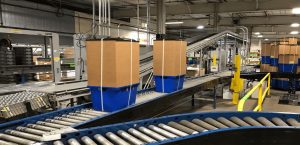
Many types of conveyor systems are present today. You have your belt conveyors, roller conveyors, powered roller conveyors, and even overhead conveyors. However, not everyone is familiar with the various advantages and disadvantages of the types as mentioned above of conveyors.
Conveyors Advantages And Disadvantages
Knowing each type of conveyor’s advantages and disadvantages is essential in deciding which model is best suitable for you. It can be tough for you if you do not know the pros and cons before choosing your conveyor. We prepared a list of the advantages and disadvantages of the different conveyor systems.
-
Belt Conveyor System
As an advantage, the belt conveyor system is the most straightforward and most simple to use. Its elevation can change in many ways, and it can make a transfer from any place in the belt. Moreover, it is the most affordable as it is one of the cheapest types of conveyors. The disadvantage is that its features are limited. Belt conveyor system is also prone to having sticky materials that get stuck on them and be transferable to the other side. Furthermore, cleaning belt conveyors may be hard.
-
Roller Conveyor System
The advantage of the roller conveyor system is that it is low maintenance. It is also more environmentally friendly since it does not use power and depends on gravity to move products. The disadvantages include that there is no speed control, products are more prone to damage, and it is not portable.
-
Power Roller Conveyor System
Advantages include easy speed control, less risk of product damages, and longer transfer distance covered. On the opposite, some of the cons of the power roller conveyor system are that they have noisy operation and are known to be more expensive than the belt and roller conveyor system. Another disadvantage is that it has a decreased conveyor system flexibility with the products it can transfer.
-
Overhead Conveyor System
An overhead conveyor system is advantageous since it effectively utilizes hanging space, operates with fewer costs, are safe to manage, allows storage of buffers of serially produced components, and provides speed differentials. However, disadvantages include that it is more expensive than the other types of systems and can be more challenging to repair if misused.
Conclusion
There are lots of advantages and disadvantages to all types of the conveyor system. Consider everything mentioned above when choosing the conveyor suitable for your needs, then purchase the conveyor accordingly.
